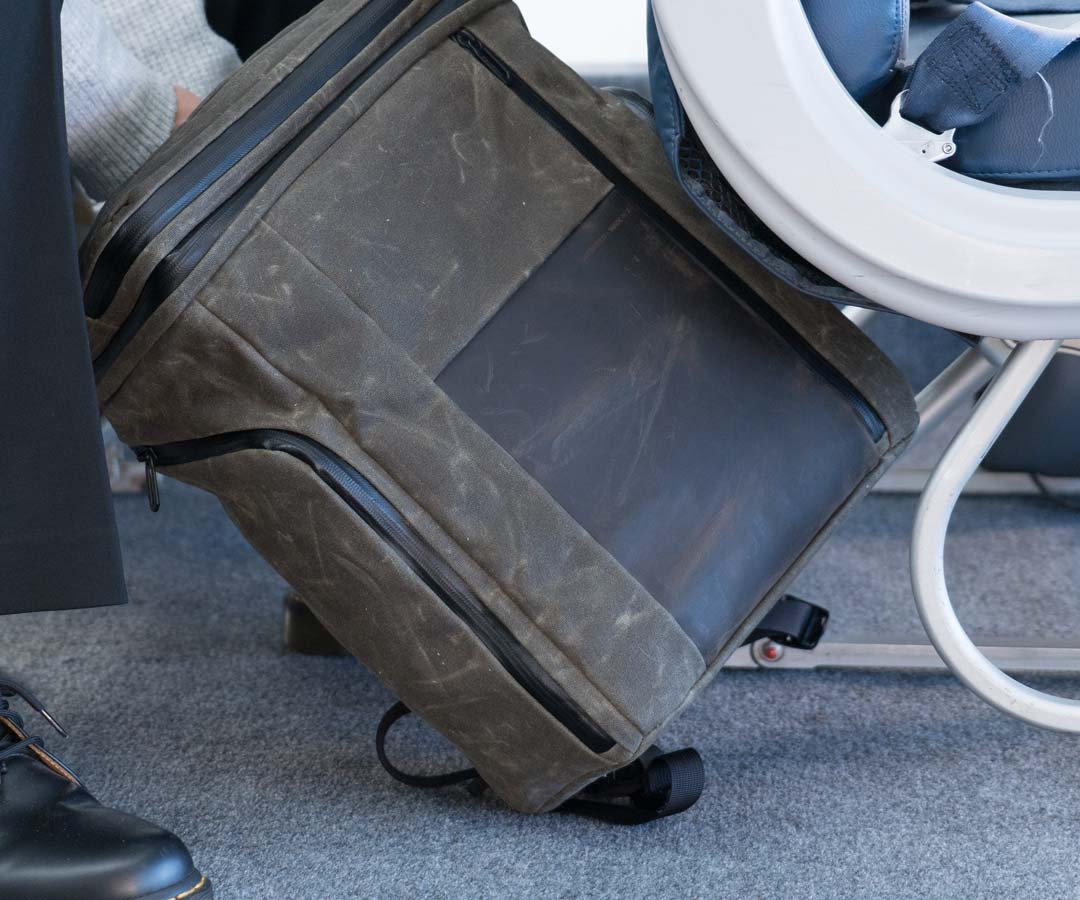
What Makes a Great Underseat Air Travel Bag?
Travel can be stressful enough without worrying about whether your bag will fit under the seat or comply with your airline’s restrictions. A well-chosen underseat bag can simplify your trip, giving you easy access to essentials and ensuring smooth boarding. But how do you pick the right one? This guide breaks down everything you need to know to choose the perfect underseat bag for air travel.
From understanding size restrictions to material durability, here’s what to consider before making your purchase.
Why Underseat Bags Matter
An underseat bag is more than just extra storage. It’s a personal item designed to fit under the seat in front of you, keeping your belongings within arm’s reach. Whether it’s a passport, headphones, or a change of clothes, the right bag keeps everything just where you need it. Investing in a high-quality underseat bag can make your travels more convenient and comfortable.
Measure Twice, Fly Once
The first rule of buying an underseat bag is to check the size restrictions of the airlines you frequently fly with. Policies vary widely, with some airlines imposing stricter limits than others.
Key Tips
- Check airline policies: Verify the dimensions for underseat storage directly from the airline’s website before making any purchase.
- Account for policy updates: Airlines can change their carry-on and underseat luggage rules without notice. Make sure your bag remains compliant.
- Universal sizing: Opt for a bag designed to fit under most airline seats, like the Waterfield X-Air Duffel, which is tailored to meet typical personal item size limits.
Durability for Frequent Flyers
Your underseat bag will endure plenty of wear and tear, from being shoved under seats to exposure to environmental elements. Durability is non-negotiable, especially for frequent travelers.
Material Matters
- Fabric selection: Look for high-denier nylon, ballistic nylon, or waxed canvas for resilience against abrasions, spills, and the rigors of travel.
- Water resistance: Choose bags with water-resistant or waterproof layers to ensure your belongings stay safe, even in unfavorable conditions.
Key Features
- Zippers: Opt for premium zippers like YKK, which glide smoothly and resist jamming. Waterproof zippers provide added protection for your contents.
- Reinforced stitching: Bags with double-stitching or reinforced seams are less likely to tear under stress, extending the bag’s life considerably.
Example Product
The Air Porter Carry-On Bag features splash-proof YKK zippers and reinforced stitching, making it a long-lasting choice for any traveler.
Packing Made Easy
One of the most valuable features of an underseat bag is its ability to maximize packing efficiency. A good design can transform your packing experience, keeping essentials accessible and reducing clutter.
Interior Organization
- Multiple compartments to separate clothes, electronics, and essentials.
- Padded sections for safely storing fragile items like laptops or tablets.
- Zippered interior pockets to secure smaller items like keys and chargers.
- Expandable compartments for additional packing flexibility.
Tip
Look for options like the X-Air Duffel, which offers dual compartments to separate clothing from tech gear.
External Accessibility
- Quick-access pockets for passports, boarding passes, and snacks.
- Water bottle holders or side pockets for umbrellas.
- Secure front compartments to keep important items handy without opening the main bag.
External pockets save time and reduce stress, especially during security checks or while boarding.
Comfort and Convenience
Long travel days require bags that are comfortable to carry. Consider bags with ergonomic features designed to reduce fatigue.
Features to Look For
- Padded handles for better grip.
- Adjustable shoulder straps that contour to your body.
- Rolling capabilities like smooth wheels or retractable handles if you prefer not to carry your bag.
- Stabilizing feet to keep your bag upright, preventing it from tipping over under the seat.
The Air Porter Backpack, for example, provides moisture-wicking mesh padding and adjustable straps for a comfortable experience, even during long hauls.
Budget Considerations
While cost matters, a cheap bag will likely end up costing more in repairs or replacements over time. It’s often more economical to invest in a premium bag that offers both durability and functionality. Remember, a high-quality underseat bag can last for years.
Top Choices for Underseat Bags 1. X-Air Duffel
- Price: $459
- Volume: 27 liters
- Dual compartments separate clothing and tech gear.
- Made from lightweight, water-resistant X-Pac® textile with leather accents.
- Ideal for versatile and stylish travel.
- Price: $389
- Volume: 14.8 liters
- Compact size, perfect for all seat configurations.
- Back passthrough slot fits over suitcase handles.
- Designed for seamless organization and upright stability.
- Price: $439
- Volume: 22 liters
- Dual top front pockets for quick access to in-flight necessities.
- Moisture-wicking ergonomic design with padded straps.
- Ideal for tech-savvy travelers carrying multiple gadgets.
Make Your Travel Smoother
Choosing the right underseat bag can elevate your travel experience, reducing stress and maximizing efficiency. Focus on size compliance, durability, and smart organizational features to find a bag that meets your needs. If you’re ready to invest in travel convenience, explore Waterfield’s air travel collection designed with frequent flyers in mind. Every product blends craftsmanship with functionality, ensuring your travel companion is as reliable as you are.Explore our underseat bags now






















